I've not tried the Bode plot on a Siglent yet. The Instek version is a joke. When I attempted a sweep from 13.3 to 13.6 MHz of a 40 MHz 3rd overtone crystal, I got 2 data points. One can do better with the MDO SA function, but it takes the square root of the power specrtrum, so the series resonance is a peak.
However, a person with the requisite mathematical skills and the ability to transfer data to a PC can match the performance of *any* instrument up to the BW of the DSO and signal generator. My "To Do" list has writing the software for that close to the top. Fixing the Tek 11801 sampling scope I just bought and testing my SD-22 sampling heads are at the top with setting up my 8753B and 85046A close behind.
Surprisingly, the cleanest and quickest solution is often still just writing down the points and sketching it yourself. And especially for beginners this is important, it's good to know what's actually going on. That way you can point out when something goes haywire.
A hacked DS1054Z will give you 100 MHz. A stock Siglent 1202X-E will give you 200 MHz as will a hacked SDS1104X-E.
A hacked DS1054Z is much closer to 200Mhz than 100Mhz. The Siglent is also well over 200Mhz.
eg. 1.7ns rise time on a DS1054Z (as measured by TurboTom with his rubidium source):
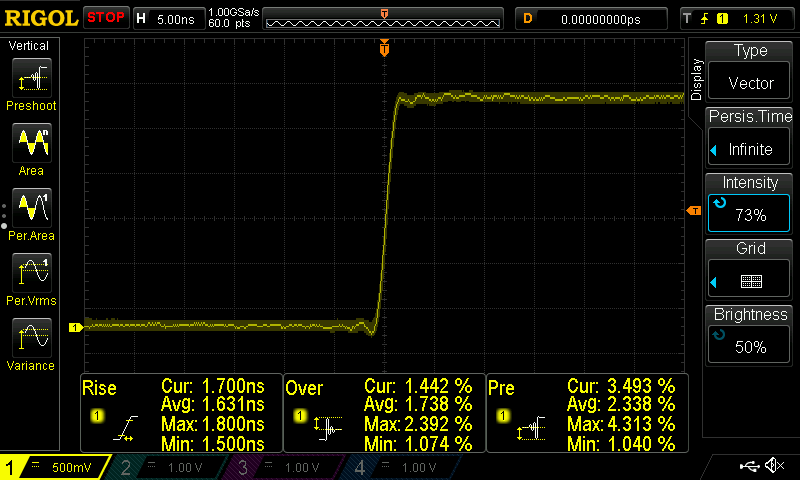
As mentioned earlier, both those numbers are well into the area where you need to really know what you're doing in terms of probing and connecting the cables. You can't simply poke at a circuit with the supplied probes and get those results.
Bandwidth shouldn't really be a factor when deciding between these two 'scopes, both have enough for everyday use, neither has enough for "serious" work.
Why do you need a rubidium clock for a fast rise time pulse? But anyway at 100 MHz you don't have to be that careful with probing, the thing is that both of these scopes their response curves won't be flat once you go above 75% of the "design bandwidth". Grab a decent RF generator and sweep at a constant power, you'll see interesting things happen. Do make sure to hook it up properly though! In practice both these scopes are limited to practical signals of around 70 MHz anyway, anything above that and you lose too many harmonics to still see what's truly going on. That third harmonic is really nice to have if you want to actually see something.
Welcome sir rf-loop, I was expecting your appearance in this false marketing show! Let me start by saying that Chinese companies still haven't learned that engineers are capable of reading through bullshit datasheets anyway, so mentioning higher numbers doesn't actually convince them. People buy HPAK, Keysight, R&S and others because their equipment actually meets the specifications they list on their datasheet. In fact, every single HPAK scope I've bothered to gauge the performance of significantly outperforms the datasheet. Meanwhile, the Rigol and Siglent units on the other hand barely make ends meet. Furthermore, the major manufacturers seem to be capable of running spellcheck on datasheets, that way you don't end up with "channe:" and other fun things like that. In short, both Siglent and Rigol have craptacular datasheets.
Rigol DS1000Z data sheet:
Vertical Scale
(Probe ratio is 1X) 1 mV/div to 10 V/div.
And same data sheet claim 12 bit resolution (High res) what is bullshit. After High res, data resolution is still 8bit and nothing else and "8 - 12bit" is only for reduce noise on the screen.
If look example some Tektronix they also use double bytes for keep high resolution averaging result data.
They do not tell 1 and 2mV/div is derived from 5mV/div. (I have owned DS1000Z and also used it and 4 years ago proofed these 1 and 2mV are not full vertical resolution what was one show stopper together with enormous signal noise and total lack of measurements horizontal resolution "highly decimated data like just from screen")
What does the probe ratio have to do with this? Do you actually understand what you're reading on datasheets?
And their 12 bit can actually be 12 bit, it's called oversampling and you can implement it in an oscilloscope. You can directly group samplings of the ADC and average them out (or better yet, interpolate them properly), this will decrease the uncertainty of the measured voltage significantly and grant you extra resolution. A better tactic which is a bit more difficult to analyse is using multiple waveform captures in a row and averaging those out. In that case the actual resolution also depends on the repeatability of the trigger and timebase stability. But I'll agree it's bad practice to just slap a number on it. However, Siglent does pretty much the same thing for other values on their datasheet (i.e. delta error between channels or when making phase measurements) so you don't get to use this as an argument against Rigol. You could have easily pointed out that their DC gain and offset definition is less precise, but they don't try to cut it up into as many chunks as Siglent to make the unit look more impressive than it is.
Siglent SDS1000X-E full resolution range starts from 500uV/div.
How useful it is, it is other question but it is not digital magnification from less sensitive range.
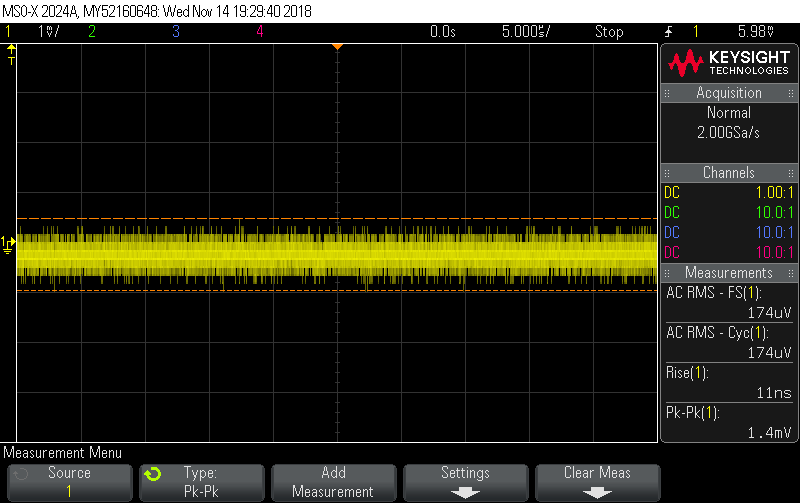
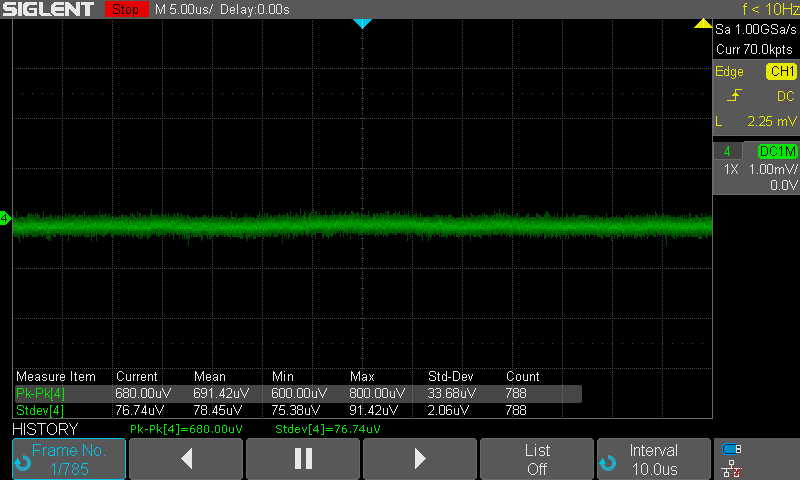
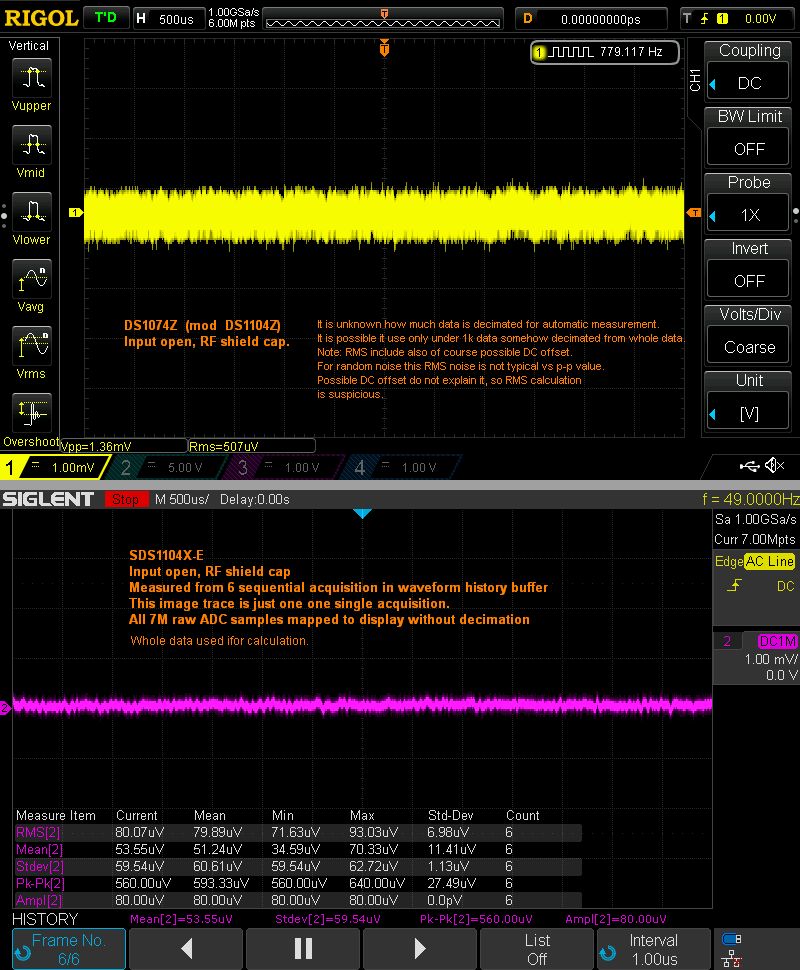
Images are from:
https://www.eevblog.com/forum/testgear/siglent-sds1204x-e-released-for-domestic-markets-in-china/msg2102305/#msg2102305
And these images prove exactly nothing, the settings were cherry picked to get that result. And testing the noise on scope frontends with no short probe or BNC short attached to them is a bit of a joke given their input impedance.

All you show is that they have a different way of displaying noisy signals. Furthermore, the Keysight unit shows the quantisation quite clearly, as it should. That's the scope holding up a sign with the following message: "Hey, we're running into the limit here, I can still show you some data but you'll have to figure out what it actually means." Neither the Swiglent or Riggedol pass the test by this metric.
SDS1104X-E and generator SDG1032X
With Siglent you car run this using up to 500 steps (501 points)
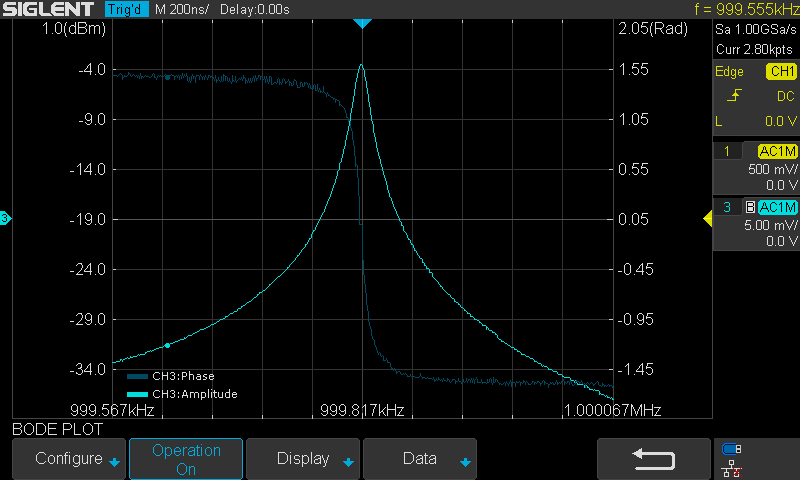
Minimum BW is 500Hz with minimum step 1Hz
exactly same XTAL using 5kHz BW
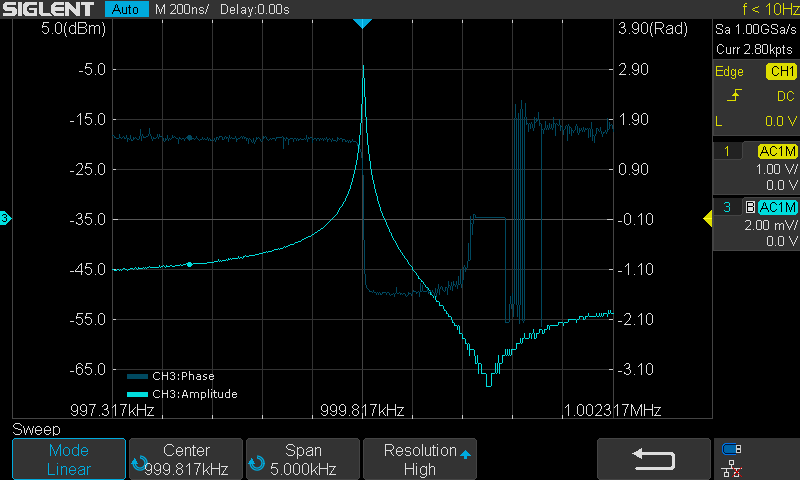
500 steps, 10Hz steps.
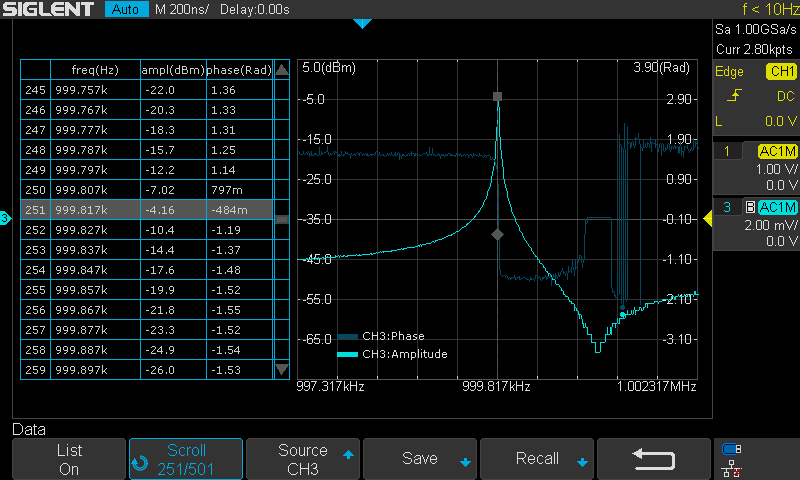
Individual points in list.
And of course Siglent FRA ("bode plot") have 3 simultaneous channels (+ref)
Here this test setup was really poor due to device under test etc. Only what is tell is that there is 3 channel.
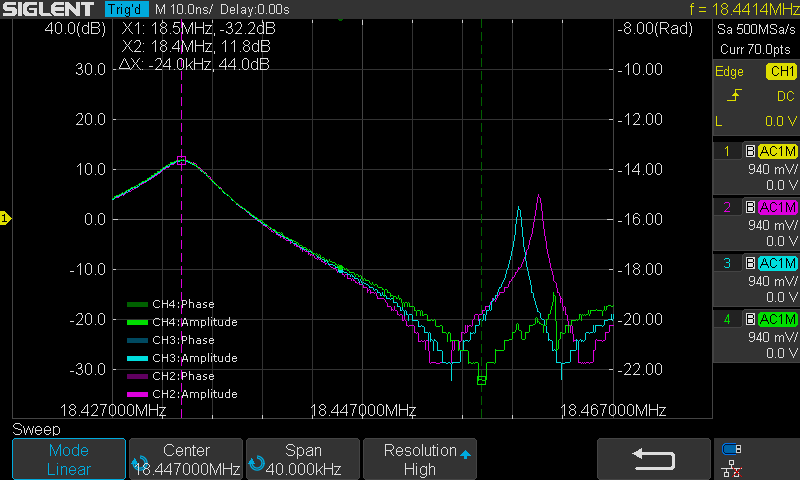
Again, what is the error on this measurement? You keep showing fancy plots but can never quite explain the numbers behind them. I wouldn't be amazed if you have 10%, or more, error on that measurement you're showing.
Have you just turned up here and never checked for mV ripple on a PSU ?
A scope is the wrong tool for that job... Try again please.
Bit confused there fungus, measuring power supply ripple to multiple mV is well within the capacity of just about every scope I have used, You may need to cross check your measurements with an external wavegen if you need fractions of a single mV,
Both the scopes showcased by the OP have at least 1 full division of resolution at 1mV, I cannot speak for the rigols noise. but the siglents is well low enough to measure better than 300uV if you spend a few minutes setting up the measurement.
Your measurement is meaningless though. It shows
something on the screen, sure. What you're actually seeing is a good question, my bet is that it might have more in common with the cosmic microwave background than with the actual signal.
It'd be fun if someone rewrote the firmware of these scopes to indicate the uncertainty bounds on the measured signals, I think people would be unpleasantly surprised.